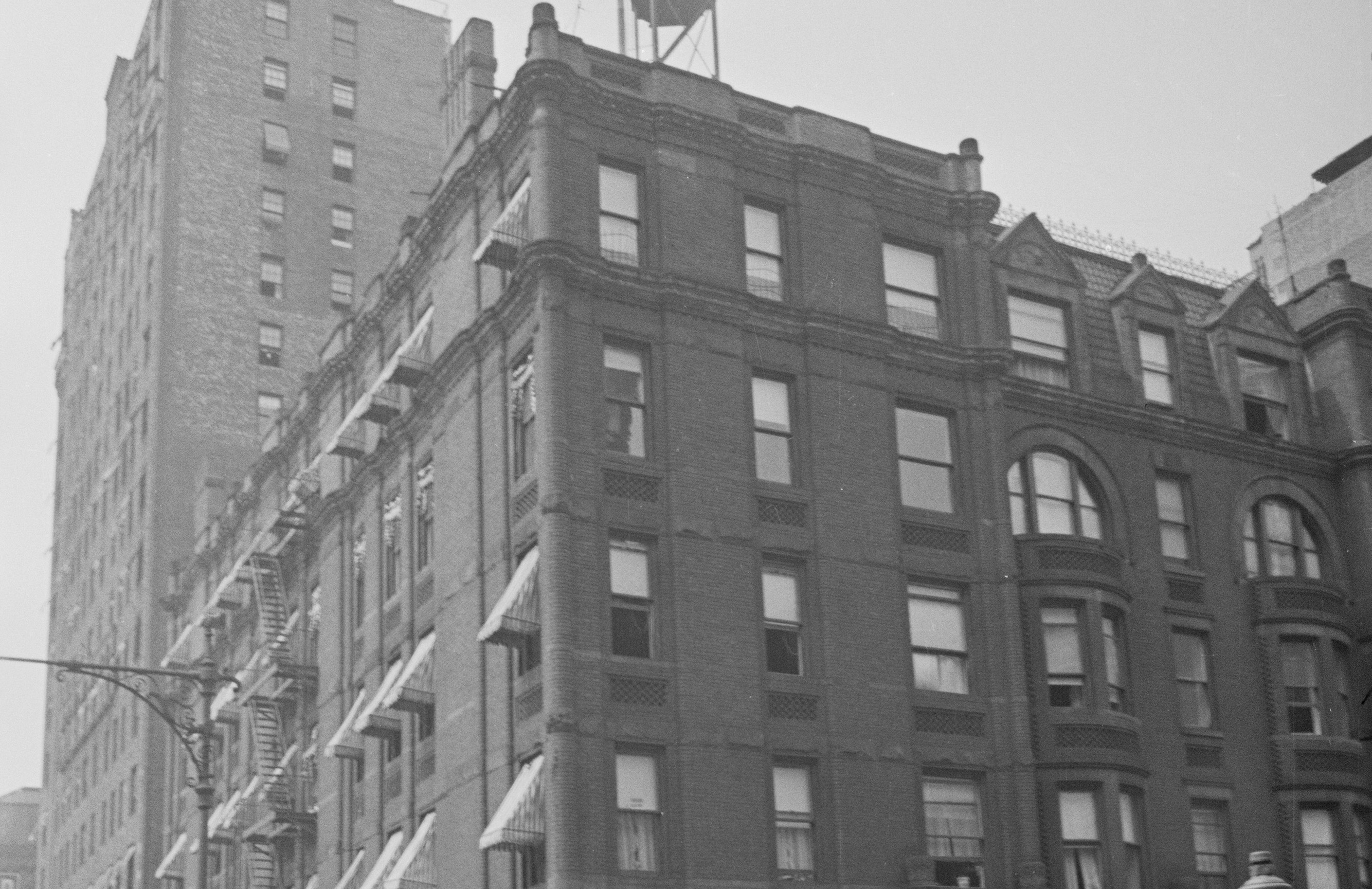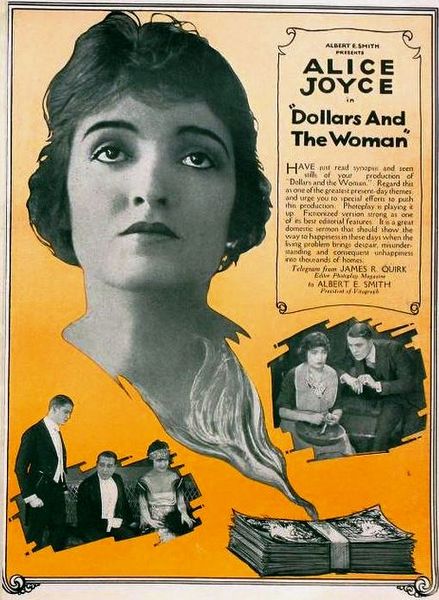
378 Amsterdam Avenue
by Tom Miller
Developer Bernard S. Levy was prolific on the Upper West Side in the last decades of the 19th century, erecting long rows of residences as well as several “flat,” or apartment buildings. On February 22, 1890, he announced that he would build three five-story flats on the southwest corner of Tenth (later Amsterdam) Avenue and West 78th Street. Completed in 1891, each of the buildings had a store at ground level. Above the brownstone base were four floors of tan Tiffany brick, trimmed in stone. The design, a modified version of the Romanesque Revival style, featured rounded corners of bull-nosed brick and tower-like corner piers. A brick parapet crowned the structures.
The residential entrances on the avenue were slipped among the shops, while the northern building boasted a formidable entrance at 200 West 78th Street. Sitting atop a four-step stoop, the arched double doorway was flanked by heavy engaged columns.
The seven-room apartments became home to well-to-do residents. Among the original occupants were Clark and Helene S. Bell, who maintained a country home, Bell View Farm, near Dundee, New York. A distinguished attorney, he was president of the Medico-Legal Society of New York–a group that foreshadowed today’s medical forensics units. In 1886 the Society said of him “he has, more than any other American, rendered important service to the great cause of Medical Jurisprudence” and “By his active zeal, he brought the Medico-Legal Society of New York, into a deserved prominence, with the professions of law and medicine and with the public.” Bell was a prolific technical author, already having published the papers, “The Coroner System and Its Needed Reforms,” “Suicide and Legislation,” “The Rights of the Insane,” “Madness and Crime,” and “Shall We Hang the Insane Who Commit Homicide?”
The design, a modified version of the Romanesque Revival style, featured rounded corners of bull-nosed brick and tower-like corner piers.
Helene Bell was shocked when Olga Nethersole produced the play Sapho at Wallack’s Theatre in the winter of 1900. She signed a petition, reprinted in The World on February 23, that read:
We the undersigned women of New York, most earnestly appeal to you, Miss Nethersole, to withdraw from the stage the play “Sapho”…We ask you to take this action because we believe “Sapho” is a menace to society calculated to exert an evil influence upon the morals of the community, particularly of the youth.
Other initial residents were stockbroker William E. Pearl and his wife, the former Minnie Schuyler. Pearl was born in 1856 in Chattanooga, Tennessee and joined his father’s brokerage firm, E. G. Pearl & Co. in 1878. He purchased a seat on the Stock Exchange that year for $16,000—nearly half a million in 2022 dollars.
Attorney Edward Gascoigne Whitaker lived here by the turn of the century. Born in 1853, he served as State Attorney-General from 1884 to 1891. A sportsman and conservationist, he was the author of Whitaker’s Game Code.
Given the social status of the residents, the arrest of Robert B. De Camp on March 4, 1903 was shocking and surprising. The 25-year-old lived here with his mother, Elizabeth De Camp. The New York Times reported, “Mrs. De Camp had been prominent in church work, and her son since early youth had attended church regularly, having been an altar boy. He became an usher and was prominent in the work of several church societies.”
On March 3, Charles B. Carroll, a 48-year-old retired businessman, met De Camp in a restaurant. They spent the evening “in various festivities,” according to the New-York Tribune. Sometime after midnight, they went to William L. Hunsacker’s billiard parlor on Columbus Avenue and 79th Street. After a few games, Hunsacker headed for home on West 81st Street. The article said, “He had gone about fifty yards from the billiard parlor when he was struck on the head and felled to the ground, unconscious.” When a passing milkman revived him, he discovered his money and jewelry were gone. De Camp and William L. Hunsacker were quickly arrested. The news was so devastating to Elizabeth De Camp that she was admitted to St. Vincent’s Hospital.
The residents, of course, employed servants. Living with Charles T. Leonard, a coal merchant, and his wife was a young Black woman, Celia Fury. They were unexpectedly lenient in allowing her to entertain male callers in the apartment. On July 12, 1910, The New York Press commented, “Celia’s callers were many, but the most frequent and apparently the most favored was [Lionel] Bailey.” Celia had a little bank in which she kept her pay. In June she realized that $52 was missing, and a week later $10 more was gone.
“He had gone about fifty yards from the billiard parlor when he was struck on the head and felled to the ground, unconscious.”
Celia told Leonard of the mystery and, according to The New York Press, “suspicion fell on the other servants.” When police were unable find the thief, Leonard took on the case himself. He marked four one-dollar bills and put them in Celia’s bank. Lionel Bailey called on Sunday night, July 10, and when he left, the bills were gone. Leonard trailed Bailey along Amsterdam Avenue until he found a policeman and had him arrested. The marked bills were in his pocket.
Living here at the time were the literary couple Albert Payson Terhune and Anice Terhune. Albert was a journalist and author. Born on December 21, 1872 he wrote novels like The Great Cedarhurst Mystery. Anice was both a composer and an author. Among her works was Home Musical Education for Children. The Turhunes would remain here at least until 1920 when Albert’s play Dollars and the Woman was produced.
That year two women residents were particularly active in political and social causes. Mrs. Joseph Taylor a member of the City Federation Club and was treasurer of The National Society Daughters of the Empire State, which focused on New York State history; and Mrs. James F. Court, was active in the Women’s Democratic Club.
A renovation completed in 1979 combined the buildings. There were now four apartments per floor. A penthouse level was added at the time that somewhat distracts from the architecture of the lower floors.
Tom Miller is a social historian and blogger at daytoninmanhattan.blogspot.com
Building Database
Think local first to support the local businesses currently at 378 Amsterdam Avenue:

Meet Steve Mohr!



